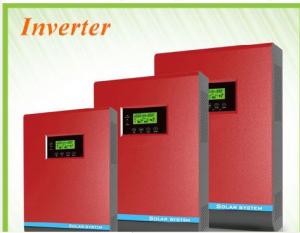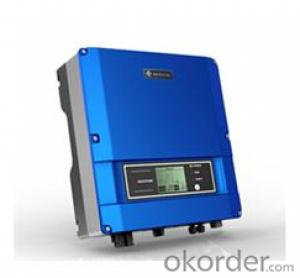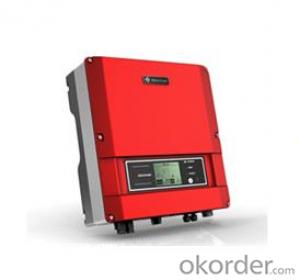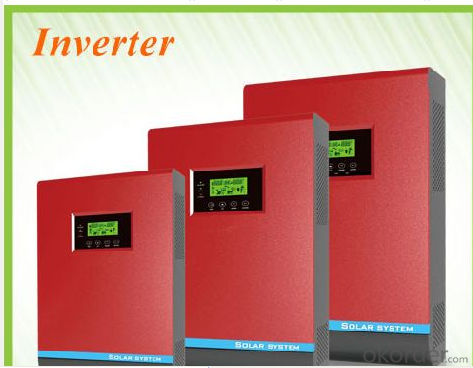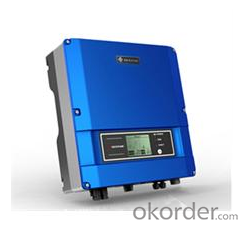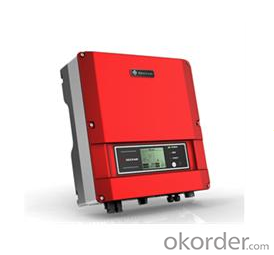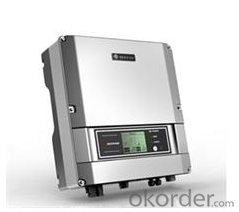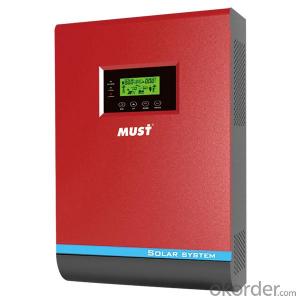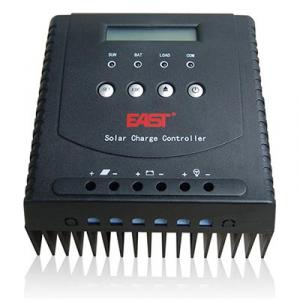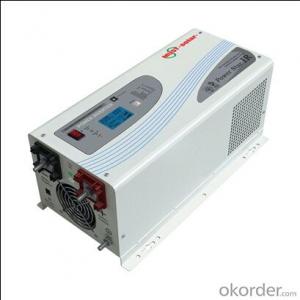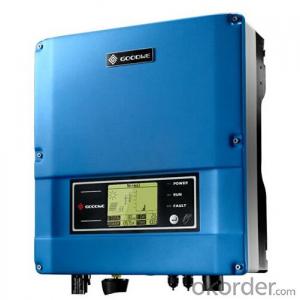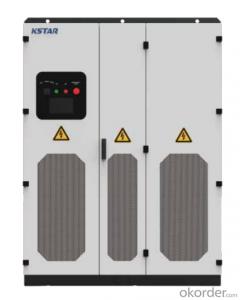Infini Solar Inverter GS1500-SS
- Loading Port:
- Shanghai
- Payment Terms:
- TT or LC
- Min Order Qty:
- 10 unit
- Supply Capability:
- 100 unit/month
OKorder Service Pledge
OKorder Financial Service
You Might Also Like
Description:
GW1500-SS photovoltaic inverter is suitable for home rooftop photovoltaic system, designed under modern industrial concept. There are three colors for option with fashionable appearance. This model is applicable for the photovoltaic system with open-circuit voltage less than 450V, maximum output power less than 1800W. Its maximum conversion efficiency can reach 97%. First-class harmonic control ability, small size and light weight make it hold a safe lead among similar products.
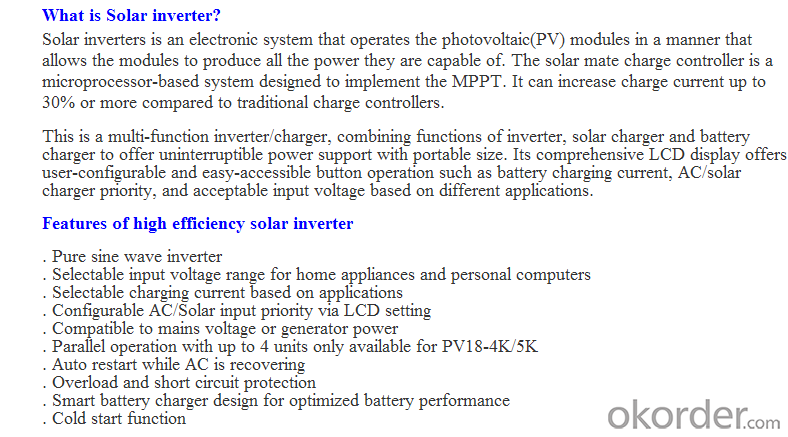
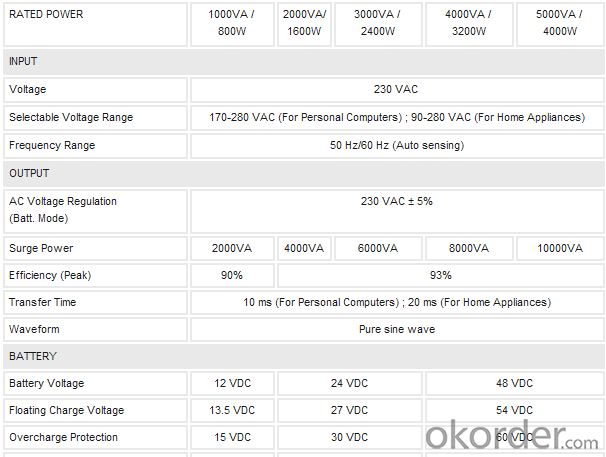
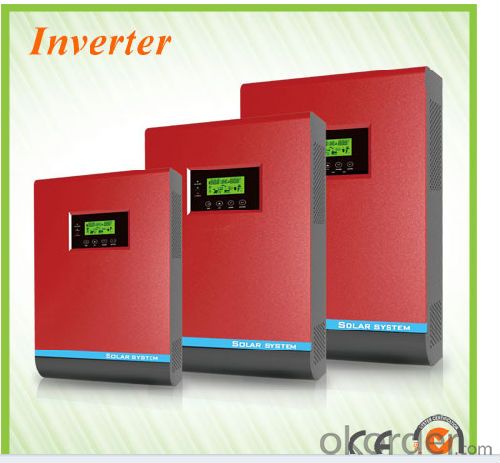
FAQ:What's your warranty?
Our warranty is 1 year
- Q: Can a solar inverter be used in regions with high levels of lightning activity?
- Yes, a solar inverter can be used in regions with high levels of lightning activity. However, it is important to install appropriate lightning protection measures to ensure the safety and functionality of the solar inverter system. This can include surge protection devices and grounding systems to mitigate potential damage caused by lightning strikes.
- Q: Can a solar inverter be used with concentrated solar power systems?
- Yes, a solar inverter can be used with concentrated solar power systems. Concentrated solar power (CSP) systems use mirrors or lenses to concentrate sunlight onto a receiver, which then converts the sunlight into heat. This heat can then be used to generate electricity through various means, including steam turbines. In order to convert this heat-generated electricity into the required alternating current (AC) for use in homes and businesses, a solar inverter is needed. Therefore, a solar inverter is an essential component in connecting and integrating the electricity generated by concentrated solar power systems into the power grid.
- Q: What is the role of a frequency regulation feature in a solar inverter?
- The role of a frequency regulation feature in a solar inverter is to maintain a stable and consistent frequency of the electricity being generated by the solar panels. This is important because the electrical grid requires a specific frequency for efficient and reliable operation of electrical appliances and devices. The frequency regulation feature in a solar inverter ensures that the electricity generated by the solar panels is synchronized with the grid's frequency, thereby enabling seamless integration and optimal utilization of solar power.
- Q: Can a solar inverter be used with different types of grounding systems?
- Yes, a solar inverter can be used with different types of grounding systems. Most solar inverters are designed to be compatible with various grounding configurations, including but not limited to grounded, ungrounded, and impedance grounded systems. However, it is important to consult the manufacturer's specifications and guidelines to ensure proper installation and compatibility with the specific grounding system in use.
- Q: What is maximum power point tracking (MPPT) in a solar inverter?
- The technique known as maximum power point tracking (MPPT) is employed in solar inverters for the purpose of optimizing the power output of a photovoltaic (PV) system. When solar panels are exposed to sunlight, they generate electricity, but the amount of power they produce can vary depending on factors such as temperature, shading, and the angle at which sunlight strikes them. The maximum power point (MPP) is the specific point at which a solar panel generates the greatest amount of power given the prevailing environmental conditions. However, because these conditions are constantly changing, it is crucial to continuously track the MPP in order to ensure that the solar panels achieve the highest possible power output. Solar inverters equipped with MPPT functionality employ advanced algorithms and electronics to continuously monitor the voltage and current output of the solar panels. By dynamically adjusting the operating voltage and current to align with the MPP, the MPPT inverter ensures that the solar panels operate at their most efficient, regardless of how the environmental conditions may change. When the solar panels are functioning at their MPP, the MPPT inverter extracts the maximum amount of power from the panels and converts it into usable AC power. This optimization leads to increased overall energy generation and maximizes the return on investment for solar power systems. In addition to enhancing efficiency, MPPT also provides other advantages. It can compensate for fluctuations in solar irradiation, temperature, or shading that might impact the power output of the panels. By continually tracking the MPP, the MPPT inverter adjusts the operating parameters to minimize the impact of these factors, ensuring a consistent and optimal power output. In summary, MPPT is a critical feature in solar inverters as it maximizes the power output of a PV system by continuously tracking and adjusting the operating parameters to align with the MPP. This technology enables solar power systems to operate at their highest efficiency, enhance energy generation, and maximize the benefits of utilizing renewable energy sources.
- Q: What is the role of a solar inverter in net metering?
- The role of a solar inverter in net metering is to convert the direct current (DC) electricity produced by solar panels into alternating current (AC) electricity that can be used to power homes or businesses. It also allows any excess electricity generated to be fed back into the grid, enabling net metering and allowing the owner to receive credits or compensation for the excess energy provided.
- Q: Can a solar inverter be used with different types of tracking algorithms?
- Yes, a solar inverter can be used with different types of tracking algorithms. The inverter is designed to convert the DC power generated by solar panels into usable AC power for various applications. The tracking algorithm, on the other hand, is responsible for optimizing the solar panel's orientation to maximize energy production. Different tracking algorithms like fixed tilt, single-axis, or dual-axis can be employed with the solar inverter to enhance energy harvesting based on factors such as sun's position, time of day, and weather conditions.
- Q: What is the role of a solar inverter in a residential system?
- The role of a solar inverter in a residential system is to convert the direct current (DC) electricity generated by the solar panels into alternating current (AC) electricity that is suitable for use in the home. It also manages the flow of electricity, monitors the system's performance, and ensures safety by providing protection against electrical faults.
- Q: How is the output voltage and frequency of a solar inverter regulated?
- The output voltage and frequency of a solar inverter are regulated through a combination of control systems and power electronics. The control system continuously monitors the input from the solar panels and adjusts the inverter's operation accordingly. It analyzes the DC voltage generated by the panels and converts it to AC voltage at the desired frequency. This is achieved by controlling the switching of power electronic devices such as transistors or thyristors. These devices convert the DC power into high-frequency AC power, which is then transformed to the desired output voltage and frequency through a transformer or filter circuit. Overall, the regulation of the output voltage and frequency is achieved by the precise control of these power electronic components within the solar inverter.
- Q: Can a solar inverter be used with different solar panel brands?
- Yes, a solar inverter can be used with different solar panel brands as long as they are compatible in terms of voltage, current, and power ratings. The inverter should support the specific voltage and power requirements of the solar panels for optimal performance and efficiency.
Send your message to us
Infini Solar Inverter GS1500-SS
- Loading Port:
- Shanghai
- Payment Terms:
- TT or LC
- Min Order Qty:
- 10 unit
- Supply Capability:
- 100 unit/month
OKorder Service Pledge
OKorder Financial Service
Similar products
Hot products
Hot Searches
Related keywords
